It was about 9:30 on a Tuesday evening, and as I expected, the bar was packed. Eating earlier than eight would be frowned-upon in any region in Spain, and late night dining is a custom that I have strangely come to adore. A beauty of the Spanish culture is that eating is secondary to socializing. Many times I might find myself with a group of Spaniards, hanging out or conversing, only to realize much later that our stomachs are growling and the night is almost pitch black; we are so involved in conversation that we are almost willing to starve. And yet, because of this, we come to appreciate the food we eat so much more because we waited for it.
I scanned the bar for an open spot to eat. There are no stools; standing is common in many bars. There was a sit-down area of the restaurant as well, but there was some time to wait, and it is not nearly as fun as standing. After a few minutes of hovering I noticed a couple collect their belongings. My chance! I rushed in and occupied the space they left behind. Personal space is not the same in Spain as it is in the United States. If anything, it is not really acknowledged. Oftentimes one could be elbow-to-elbow at a bar and it would be socially acceptable. I have had my personal bubble popped a few times, but then I remembered that closeness of personal space is not done to offend, but is just another element of the culture.
I analyzed the menu thoroughly. I knew I wanted at least two or three tapas tonight, and considering that they were around 3 Euros each I could not help but feel exhilarated. I once heard a story about tapas and how they came into existence. Back when the sanitation of eateries was questionable there would be flies buzzing around, especially on hot days. In order to keep flies from falling into drinks, bartenders would give a piece of bread to place on top of the drink to cover it. Naturally, one would drink and then eat the piece of bread. Over time they started giving out nuts and olives, which evolved into more elaborate snacks.
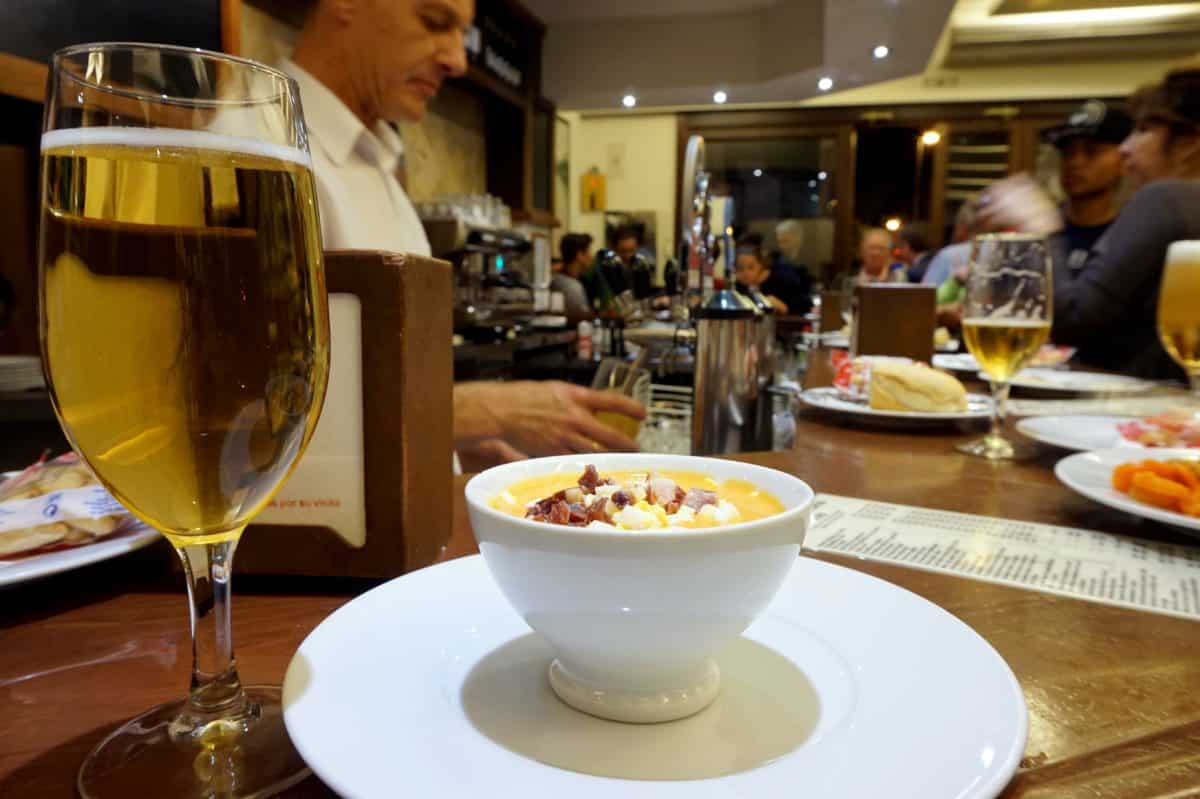
Finally, I decided on salmorejo soup and ham croquettes. The croquettes were delicious and well-prepared, but they were not extraordinary compared to the salmorejo. Salmorejo resembles the classic gazpacho in that it is a chilled tomato-based soup. The difference is in the final touches. Salmorejo is typically creamy and thick with a salmon-colored hue to it. On top is a garnish of minced jamon Serrano (Serrano ham), hard-boiled egg, and green pepper.
With the first spoonful I felt enlightenment. Although the color of the soup was plain, the flavor was bold and like nothing I’d tasted before. I did not expect something so simple, with a texture so smooth and creamy, to have flavor that popped like a firecracker in my mouth. Like a religious experience, it was a revelation, moving and meaningful.
Just a few days before, I was able to witness Semana Santa (Holy Week) in Seville. Seville is very well known for its religious processions in honor of Jesus Christ and the Virgin Mary. In fact, visitors come from all parts of the world just to see these religious processions in Seville. There are many different brotherhoods that dress in colors distinctive to their organizations. Americans may confuse them with a particularly infamous organization from the 1920s, but I can assure you that there is no relation whatsoever. In fact, one of the earliest brotherhoods was established in the 14th century.
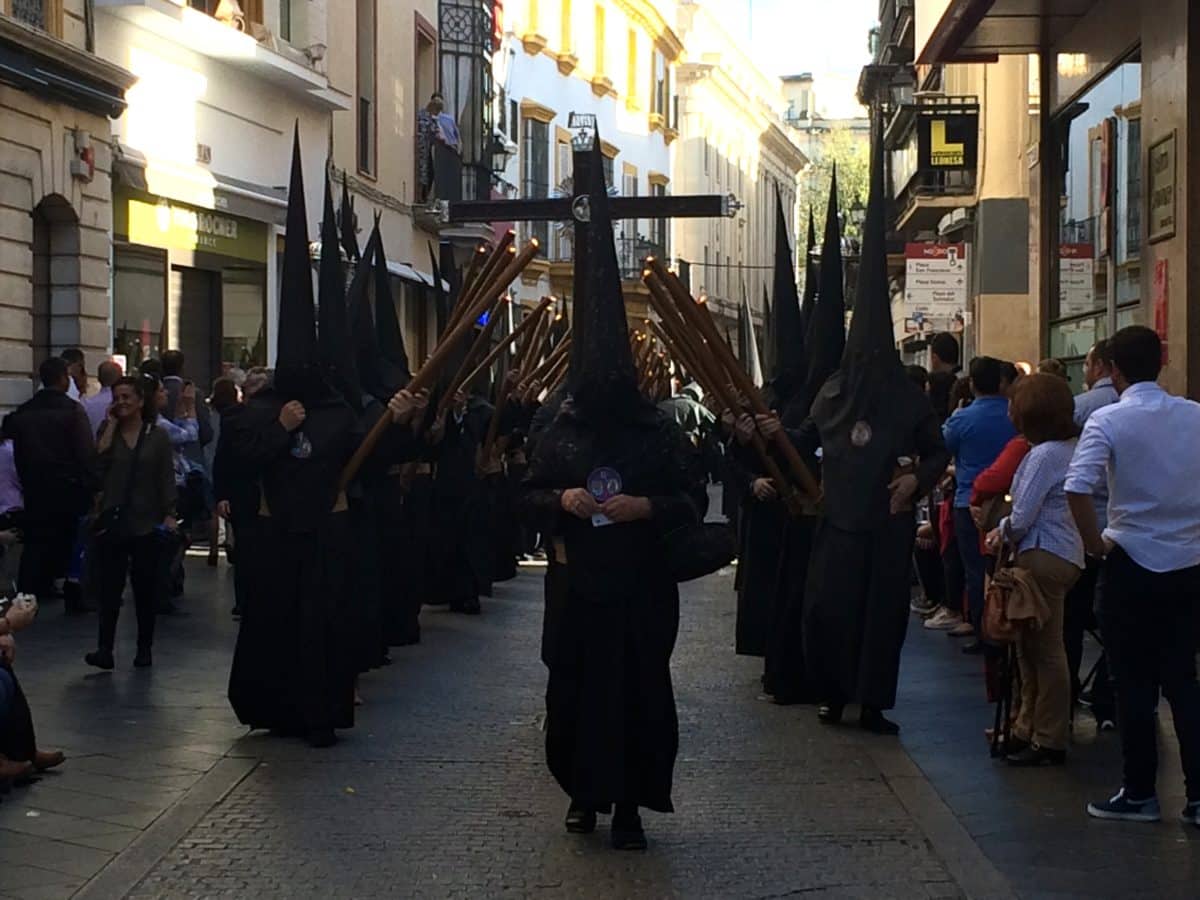
I decided to attend La Madrugada (or as Sevillians say, La Madrugá) which was Thursday night creeping in to the morning of Good Friday. It is a time of mourning the Crucifixion, but also a time of very little sleep. My friend and I decided to wander the streets to see which brotherhood we would run into. I wanted to see El Gran Poder (The Great Power). The streets were absolutely packed with people watching processions or trying to cross streets to see other processions. Many streets were so crowded, navigation was difficult. We still managed to find El Gran Poder, and I was so glad I was able to see it. The Nazarenes were all dressed in black and no music accompanied this procession; instead silence haunted it like a phantom.
Since we’d had only an hour and a half of rest before going out that night, my friend and I were in a state of sleepy stupor. Luckily we encountered a stand that was selling torrijas, a dessert similar to French toast that is made specifically during Semana Santa. We each bought one just to get our blood sugar high enough to get us back home. By this time it was nine in the morning, and walking was our only option since taking a cab through all the detours around the festival meant double the usual cost. We needed a pick-me-up to make the hike home.
We were each given a plastic fork and a large torrija on a styrofoam plate, just the way it should be. It was very soft and drenched in honey. Although Sevillians see it as a dessert or snack, I thought of it as the perfect French toast I would’ve had for breakfast if I were back in the States.
A few days later, at the bar, I added one more item to my order of salmorejo and croquettes: gambas al ajillo (shrimp cooked in garlic). It is one of my favorite Spanish dishes of all time. Not only are the shrimp delicious, but the oil is perfect for dipping. We call the pieces of bread barcos (boats) when we dip them in the oil. My head as the moon, the bread as the boat, and the oil as the sea, I drag the bread through the currents. The gravity of the moon is too strong, and the boat drifts to my mouth. ![]()
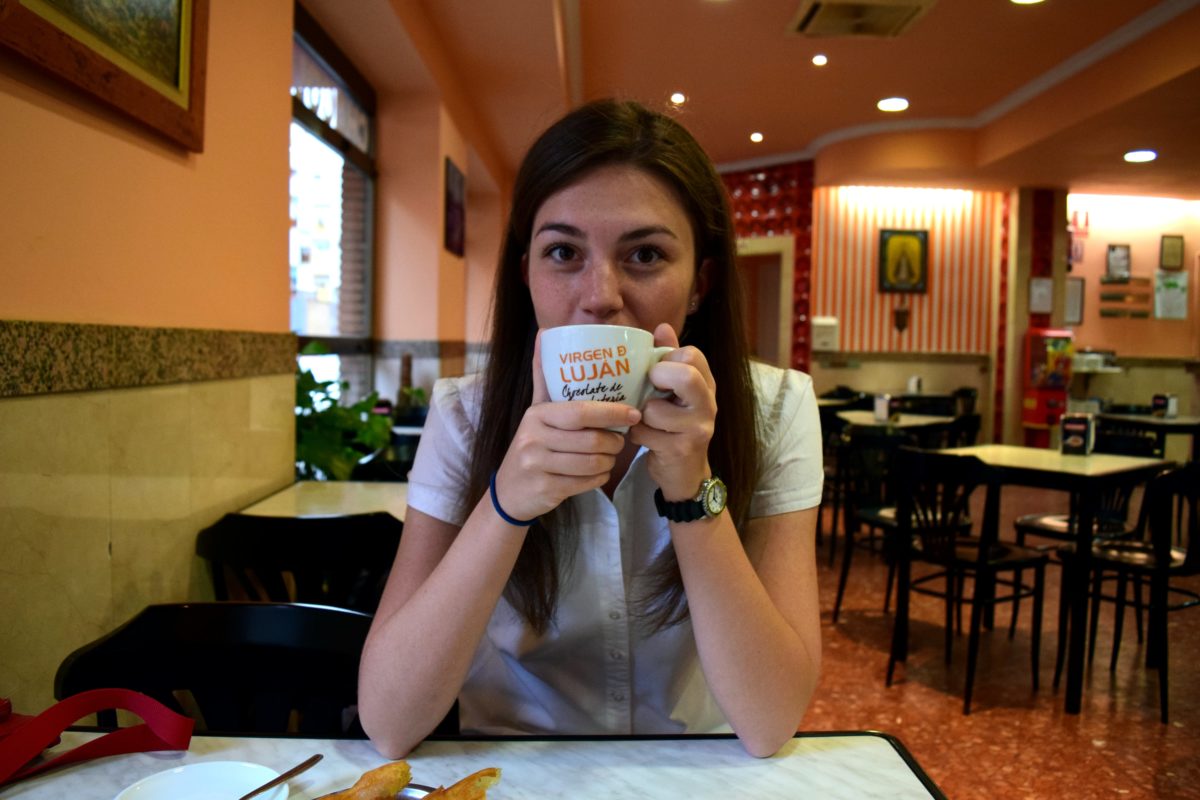
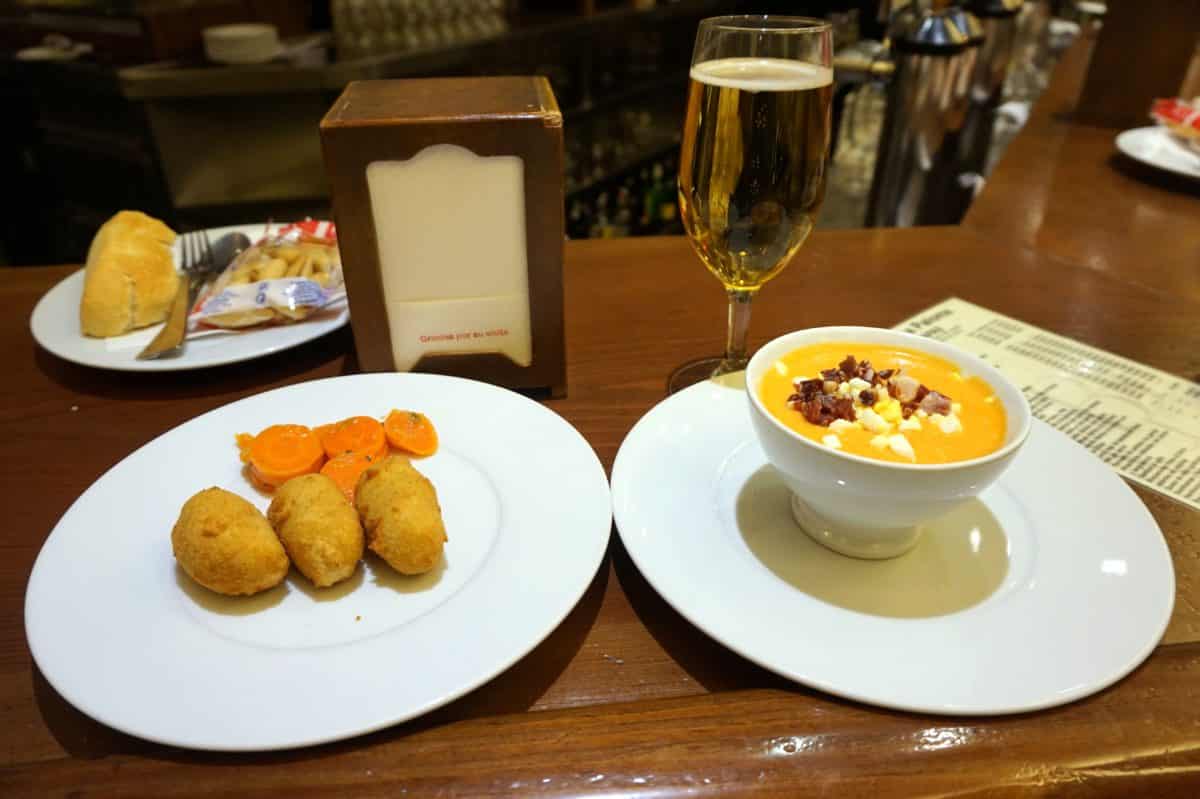
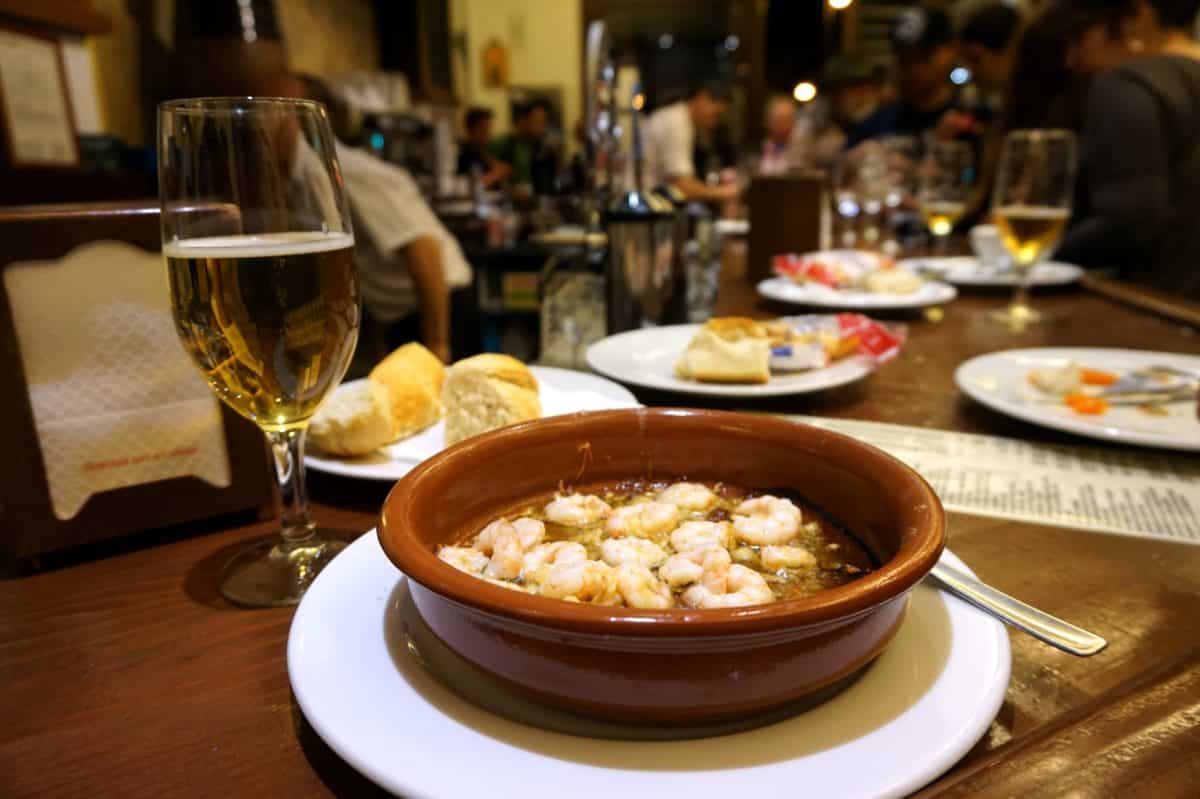
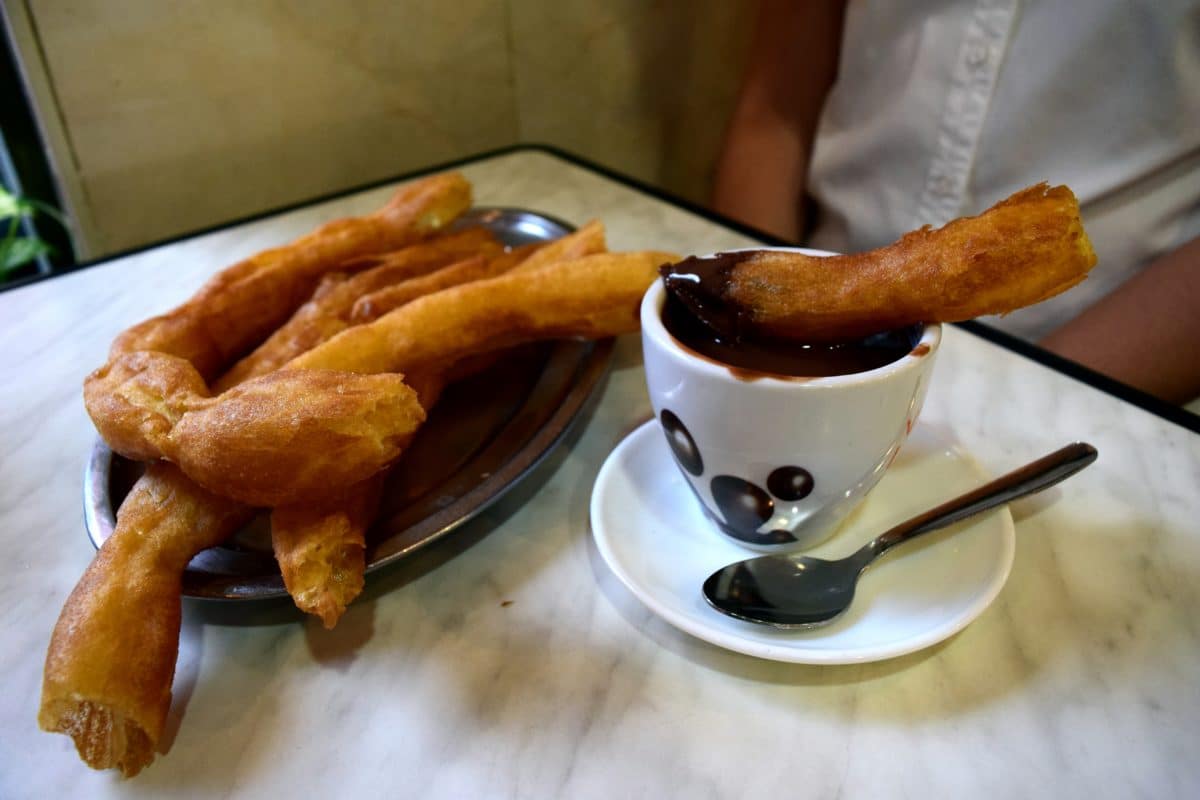
First published June 2015
